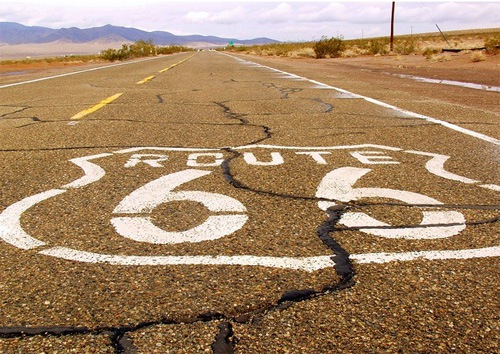
Out there in the big wide world of search engines and sites, you have ads and you have search results. Your website is getting traffic from both. The search results go to your Home page, while the ads go to your Products page. Both pages are landing pages; the visitor “landed” on them from wherever they clicked.
Consider the Landing Page
A landing page is extremely important, especially those for ads. You’re spending money on those ads, so you want to guarantee (as much as possible) that visitors convert from the page they land on rather than have them click away. The last reaction you want from them is to scream and quickly click the back button.
The feel of a landing page is as important as the need your product fills…
Although the description above may seem overblown, (and is, people seldom scream), I’ve seen websites that hurt the eyes and brain. When you look into things like color psychology, you start to understand that some colors can make people feel “sick” or sad, happy or irritable. Too much “clutter” can make people feel hemmed in or oppressed.
The Components of a Converting Landing Page
Okay, so you want your landing page to convert at an optimal percentage. How do you do that? What does it take?
How it looks…
Professional, authoritative, trustworthy – your site needs to show you as a professional, trustworthy authority to buyers. Authority badges help with this, as do colors used, the way the page is laid out, what images you use and the wording.
How it feels…
Think of a high-dollar lawyer’s or doctor’s office. With some exceptions, most are clean, uncluttered and spacious. These professionals have professional quarters that scream “professional”. Your website should have the same feel: clean, uncluttered and inviting.
Clear calls to action…
Once they get there, what do you expect visitors to do? Is the landing page a portal to another site? Is the purpose of the page to have people sign up for something? Are they there to buy? If a visitor can’t immediately understand what they’re supposed to do, they won’t take action.
You’ve heard it before; you’ll hear it again. Give a clear call to action. Have you ever wondered why most sales pages say the same thing?
- Buy Today!
- Join Our Mailing List!
- Click Here to Continue!
Those things work. Flashing images work. Flashy, pointy arrow things work. Flashy, pointy arrow things with signs that say “Buy Today”… they really work. You get the point.
What it says…
Now we’re to the nitty gritty. The visitor clicks through because of a compelling ad. The layout, colors, images and authority badges are all present and accounted for. The call to action is fantastic. They’re drawn to it, but they want to find out a little bit more.
Don’t Let Your Conversion Die
You have them in your grasp, but you could quickly kill that prospect with a weak headline. So what does a good headline have that others don’t? It has at least two of the following components:
- It’s compelling.
- It gives a sense of urgency.
- It builds a feeling of excitement.
- It pulls the reader into the following content.
A strong headline grabs their attention with a one-liner: a one-line overview of what comes next…
Get a FREE site evaluation worth $500 for participation. Offer Expires 10/25/10!
Learn how to write like a PRO! Join Our Mailing List!
Closing the deal…
Your prospect is almost a full conversion, but you have to have that last little bit that makes them act. As soon as they read the headline, they should have a short little paragraph explaining what your offer is, why you’re offering it and how long it’s going to last. Get them moving and follow up with your flashing, pointing arrow call to action.
Ever wonder why so many sales pages are 1,000 words long or longer? The answer is this; if the visitor passes by that first call to action but doesn’t click away, you’ve haven’t lost them. They aren’t convinced, but they aren’t turned off, either. You still have a chance for that conversion. Follow your first call to action with more information.
Several landing pages are available for your perusal on the Web. Dean Graziosi, for example, has tons of them up. So do Russ Dalbey and many others. Compare them in look, feel, tone and layout. If one makes your feel more positive than another, try to figure out why. Study them and, once you think you have it figured out, test, test, and test some more.
Finally, remember: A good landing page is the warm, convincing master salesperson invited into your house to talk about a product you’re already interested in. A bad landing page is like a 4:00 am sales cold call about vacation rentals in Timbuktu.
Post image by Rebekah May




